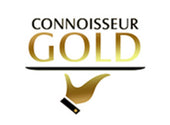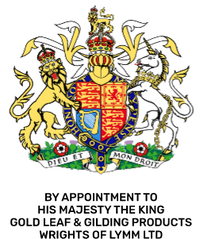Edible Gold leaf Across the World - Türkiye
- by sam@wrightsoflymm.co.uk User
A Golden Tradition Rooted in History
The use of edible gold leaf in Turkey dates back centuries, intertwining with the nation’s deep cultural and culinary heritage. Gold, a universal symbol of wealth, divinity, and beauty, has long held a place of reverence in Turkish art, architecture, and cuisine.
During the Ottoman Empire, goldleaf was not only used to decorate mosques, manuscripts, and palace walls but also to embellish the dining experiences of sultans and nobility. Gold represented prosperity and divine favour, so incorporating 24 carat gold leaf into feasts was a way to honour guests and celebrate important occasions.
Historical accounts and Ottoman recipe collections mention sweets and sherbets served with delicate layers of 23 carat goldleaf or silver leaf. These edible metals were believed to promote health, longevity, and vitality — reflecting both aesthetic and medicinal values.
The Art and Science of Edible Gold Leaf
Gold leaf used in cuisine is made by hammering pure gold into ultra-thin sheets, often just a few microns thick. In Turkey, artisans still produce both 23 carat and 24 carat goldleaf, depending on the desired softness and brightness.
-
24 carat gold leaf: 100% pure gold, the softest and most brilliant type used for luxury desserts and beverages.
-
23 carat gold leaf: Slightly alloyed with trace metals like silver, giving a firmer texture ideal for fine decoration.
-
Silver leaf: Often used alongside gold for visual contrast, especially in traditional Turkish delights and confections.
These sheets are incredibly fragile and must be handled with specialized brushes or tweezers to prevent tearing. Modern producers also offer gold flakes, gold dust, silver flakes, and silver dust for easier application and contemporary food design.
From Ottoman Palaces to Modern Turkish Cuisine
In modern Turkey, the use of goldleaf has expanded beyond royal banquets to high-end restaurants, patisseries, and even mixology bars. Edible gold leaf and silver leaf are now symbols of sophistication and celebration in many Turkish culinary experiences.
Luxury Desserts and Confections
In Istanbul’s upscale dessert shops, you’ll find baklava topped with 24 carat gold leaf, Turkish delight (lokum) coated with gold flakes, and even kunefe (a cheese-based pastry) shimmering with gold dust. These glittering touches transform classic sweets into modern luxury statements.
Fine Dining and Modern Gastronomy
Chefs in Turkey’s fine dining scene use goldleaf to elevate dishes both visually and symbolically. A delicate gold flake atop a plate of mezze or a silver dust accent on seafood creates a dramatic presentation while preserving the minimalist beauty of Turkish cuisine.
Beverages and Celebrations
Luxury cafés and bars in Istanbul, Antalya, and Bodrum have embraced gold dust and silver flakes for aesthetic flair in cocktails, Turkish coffee, and even champagne. The tradition of using edible metals to celebrate wealth and joy continues in modern forms — from wedding feasts to New Year celebrations.
Cultural Symbolism and Modern Appeal
The continued fascination with goldleaf in Turkey lies in its symbolism. Gold embodies not only material wealth but also purity, honor, and divine light. Using 23 carat or 24 carat gold leaf in food evokes the grandeur of Ottoman traditions while satisfying modern tastes for elegance and uniqueness.
Moreover, Turkey’s role as a bridge between East and West has positioned it as a cultural hub where old-world opulence meets modern creativity. Artisans and chefs alike use gold flakes and silver flakes to tell a story of continuity — connecting ancient luxury with contemporary design.
Health and Safety Considerations
While edible gold leaf and silver leaf are non-toxic and approved for consumption, they provide no nutritional value. However, their inert nature means they safely pass through the body without absorption. Authentic 24 carat gold leaf and 23 carat silver leaf used in Turkey are rigorously tested to meet food-grade purity standards. Consumers should always ensure they purchase from reputable brands to avoid imitation or industrial-grade materials.
Conclusion: A Legacy That Still Shines
The story of edible gold leaf in Turkey is a journey through time — from Ottoman splendour to modern gastronomy. Whether used as 24 carat gold leaf on baklava, silver dust on lokum, or gold flakes in cocktails, these luminous touches continue to symbolize Turkey’s love of beauty, luxury, and heritage.
As Turkish chefs and artisans keep blending tradition with innovation, the allure of goldleaf in cuisine remains as timeless and brilliant as ever.






